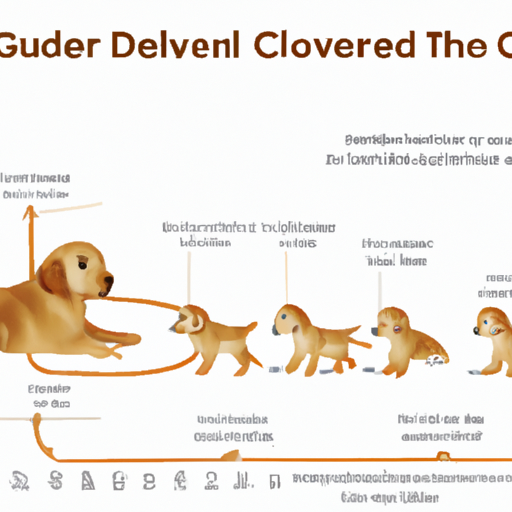As a loving pet parent, you’ve probably found yourself asking, “how long do dogs grow in size?” The truth is, just like humans, dogs also have their unique growth patterns and timelines that depend on various factors such as breed, genetics, diet, environment, and overall health. This comprehensive guide aims to shed light on the growth process of dogs, so you can better understand your furry friend’s developmental stages and ensure they grow to their full potential.
- TOC
{toc}
Key Takeaways
- The growth rate of dogs varies depending on the breed, genetics, and overall health.
- Small breeds generally reach their adult size faster than large breeds.
- Nutrition and exercise play critical roles in a dog’s growth.
- Regular vet check-ups are essential for monitoring your dog’s growth and health.
Understanding Dog Growth Stages
Just as human children don’t become adults overnight, puppies also go through various stages of growth before they reach their full size. Let’s delve into these stages to better understand your dog’s growth.
Puppy Stage
The puppy stage is the first stage of a dog’s life, and it’s during this time that they experience the most rapid growth. Small breed puppies, such as Chihuahuas or Pugs, often reach adult size by the age of 6 to 9 months. On the other hand, giant breeds like Great Danes or Saint Bernards may continue to grow until they are 1.5 to 2 years old. You can read more about the fascinating world of puppies here.
Adolescent Stage
The adolescent stage typically starts when a dog is around six months old and can last until they are 1 to 2 years old, depending on the breed. During this stage, dogs might not grow much in height, but they will start filling out, gaining muscle and fat.
Adult Stage
By the time most dogs reach the age of one, they’ve reached their full height. However, some larger breeds may continue to grow in height for several months after this. During the adult stage, dogs continue to fill out with muscle and fat, eventually reaching their full adult weight.
Factors Influencing Dog Growth
Several factors can influence how long a dog grows and its final size. Let’s explore some of these key factors.
Breed
Breed is perhaps the most significant determinant of a dog’s adult size. Small breeds tend to reach adult size more quickly than giant breeds. For instance, a Chihuahua might stop growing by the age of 9 months, while a Great Dane may not reach full size until two years of age.
Genetics
Genetics play a crucial role in determining a dog’s size. If a dog comes from a family of large dogs, it’s likely to grow larger than average. Conversely, if a dog’s parents are small, it’s likely to remain on the smaller side.
Diet and Exercise
Proper nutrition and exercise are essential in ensuring a dog grows to its full potential. Puppies should be fed high-quality puppy food, which is specifically designed to support their rapid growth. Regular exercise is also crucial for maintaining a healthy weight and building strong muscles. You can find out more about the importance of diet and exercise for your dog here.
Health
Certain health issues can affect a dog’s growth. For instance, a dog suffering from malnutrition or a serious illness during its growth phase may not reach its full size. Regular veterinary check-ups are essential to ensure your dog is growing properly and to identify any potential health issues early.
Frequently Asked Questions
1. How can I tell if my dog is done growing?
Most dogs are done growing in height by the age of one, but they may continue to fill out with muscle and fat for several months after this.
2. How can I ensure my dog grows to its full potential?
Feeding your dog a balanced diet, ensuring they get plenty of exercises, and scheduling regular vet check-ups are all crucial for your dog’s growth.
3. What should I do if I think my dog isn’t growing properly?
If you’re concerned about your dog’s growth, you should consult your vet. They can perform a physical examination and may suggest dietary changes or tests to rule out any underlying health issues.
To summarize, the growth process of dogs can be complex and is influenced by various factors. By understanding these factors, you can ensure your dog grows healthy and reaches their full potential. For more information on dog growth and other dog-related topics, check out the website onetopdog.com and explore articles like this one and this one.



